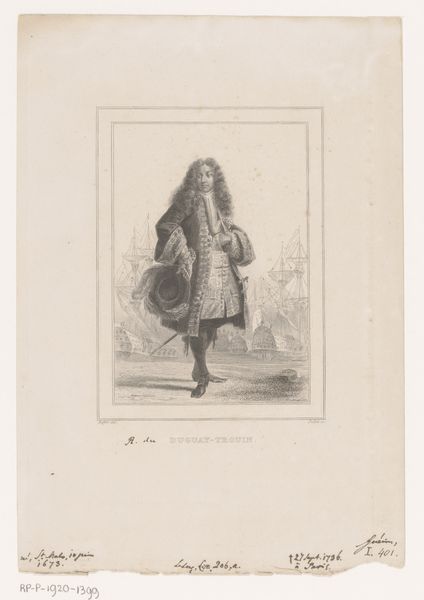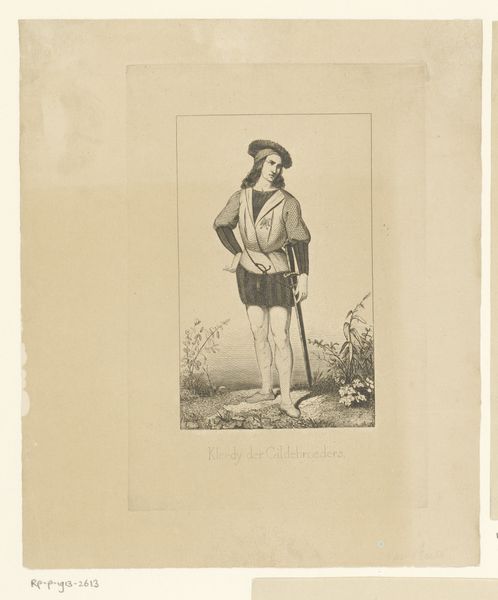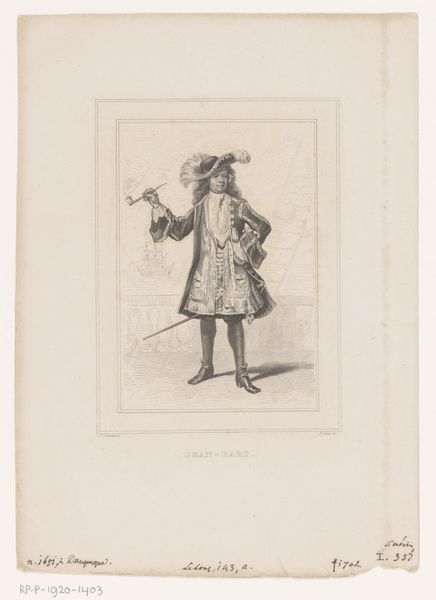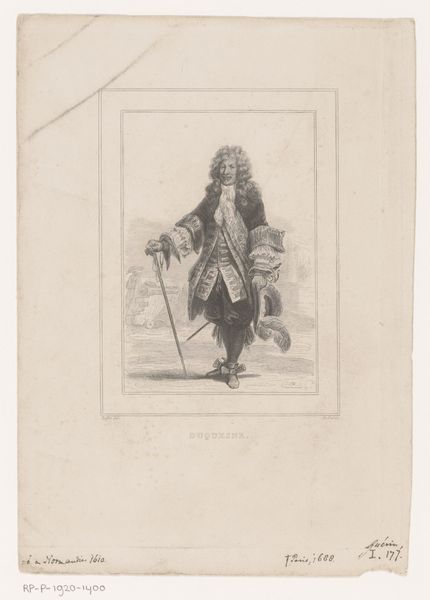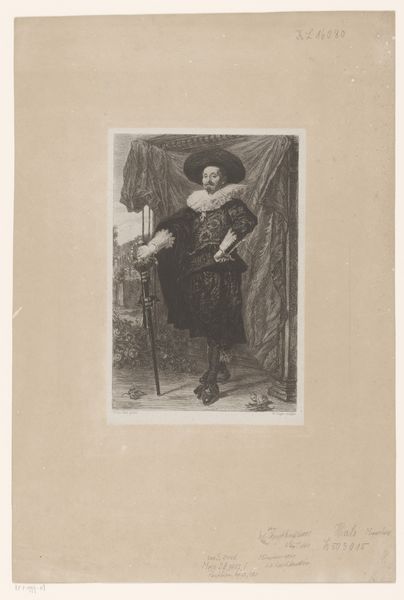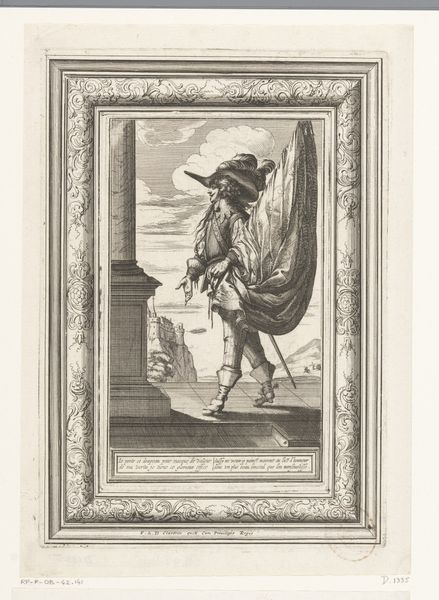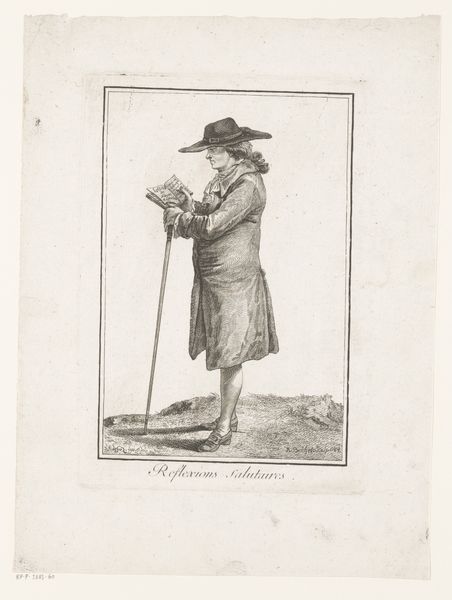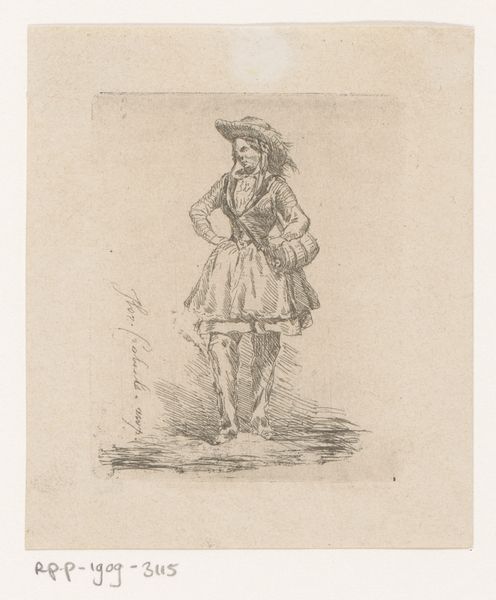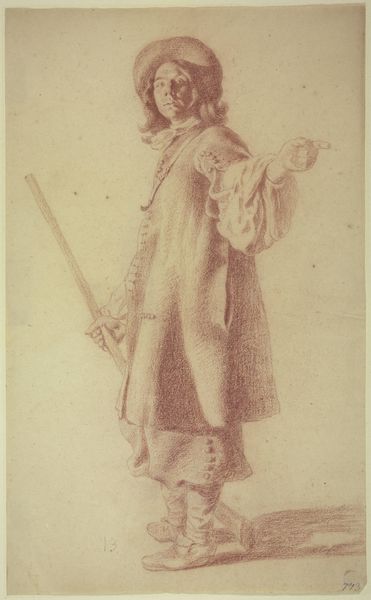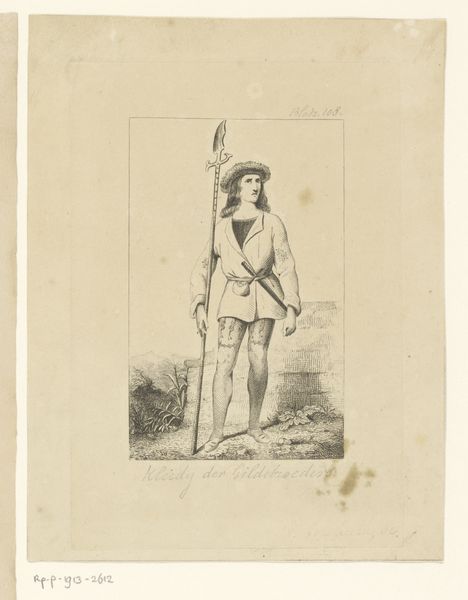
drawing, pencil
#
drawing
#
pencil sketch
#
pencil
#
realism
Dimensions: height 247 mm, width 168 mm
Copyright: Rijks Museum: Open Domain
Editor: Here we have Victor Florence Pollet’s "Portret van Victor-Marie d'Estrées," a pencil drawing created between 1835 and 1837, residing here at the Rijksmuseum. I’m struck by how formal and posed it is, even for a sketch. What elements stand out to you, considering its time and potential cultural context? Curator: Well, considering this was created several decades after the death of the sitter in 1737, it’s clear we're looking at a constructed image of power. This isn’t about capturing a likeness, but about perpetuating a certain narrative. Note the strategic framing: How does placing d'Estrées within an etched rectangle affect its role within public perception? Editor: I see what you mean. It does add a layer of officialdom. So, the art isn’t necessarily to portray him but to convey some level of constructed prestige, how does that apply from the sociopolitical context? Curator: Exactly. And what about the choice of medium? Why create this in pencil rather than oil or sculpture, which were typically employed for similar historical portraits? Editor: Perhaps because pencil allows for easier reproduction and distribution, democratizing the image? Curator: Precisely. The very accessibility of the medium broadens his symbolic presence in culture, cementing d'Estrées within a very calculated historical image, influencing public role and shaping national identity through art. Editor: It’s fascinating how the piece can be used to shape a specific perception and influence historical memory, so it wasn’t just art, it’s a political device to project d'Estrées for future generations to remember in a calculated way. Curator: Indeed. This work isn't just about one man; it's about the politics of imagery and its power to create a desired image of historical figures within culture. It also helped me to remember that the art in galleries and museums is only one part of the cultural influence on it and its role in public memory.
Comments
No comments
Be the first to comment and join the conversation on the ultimate creative platform.
